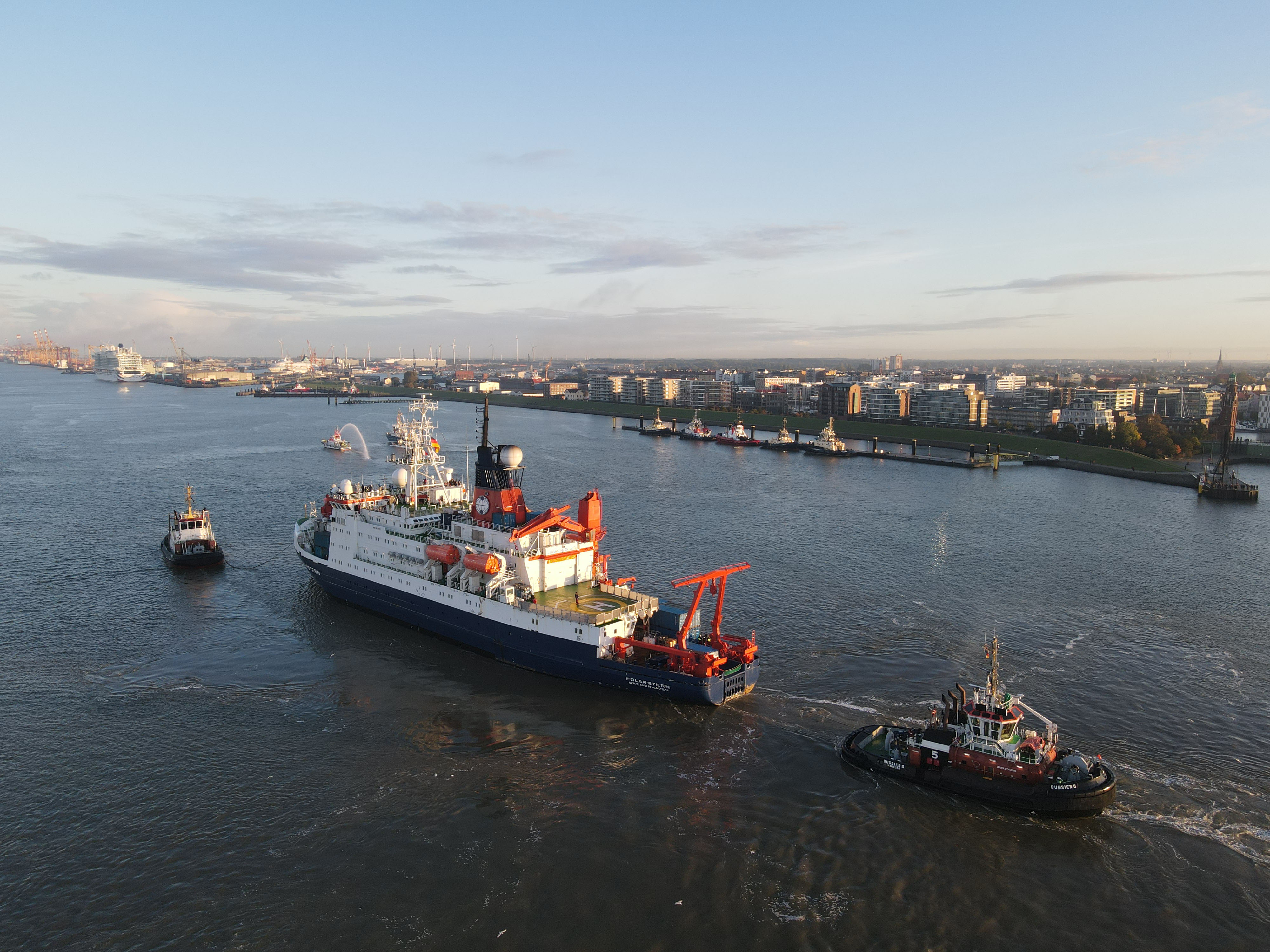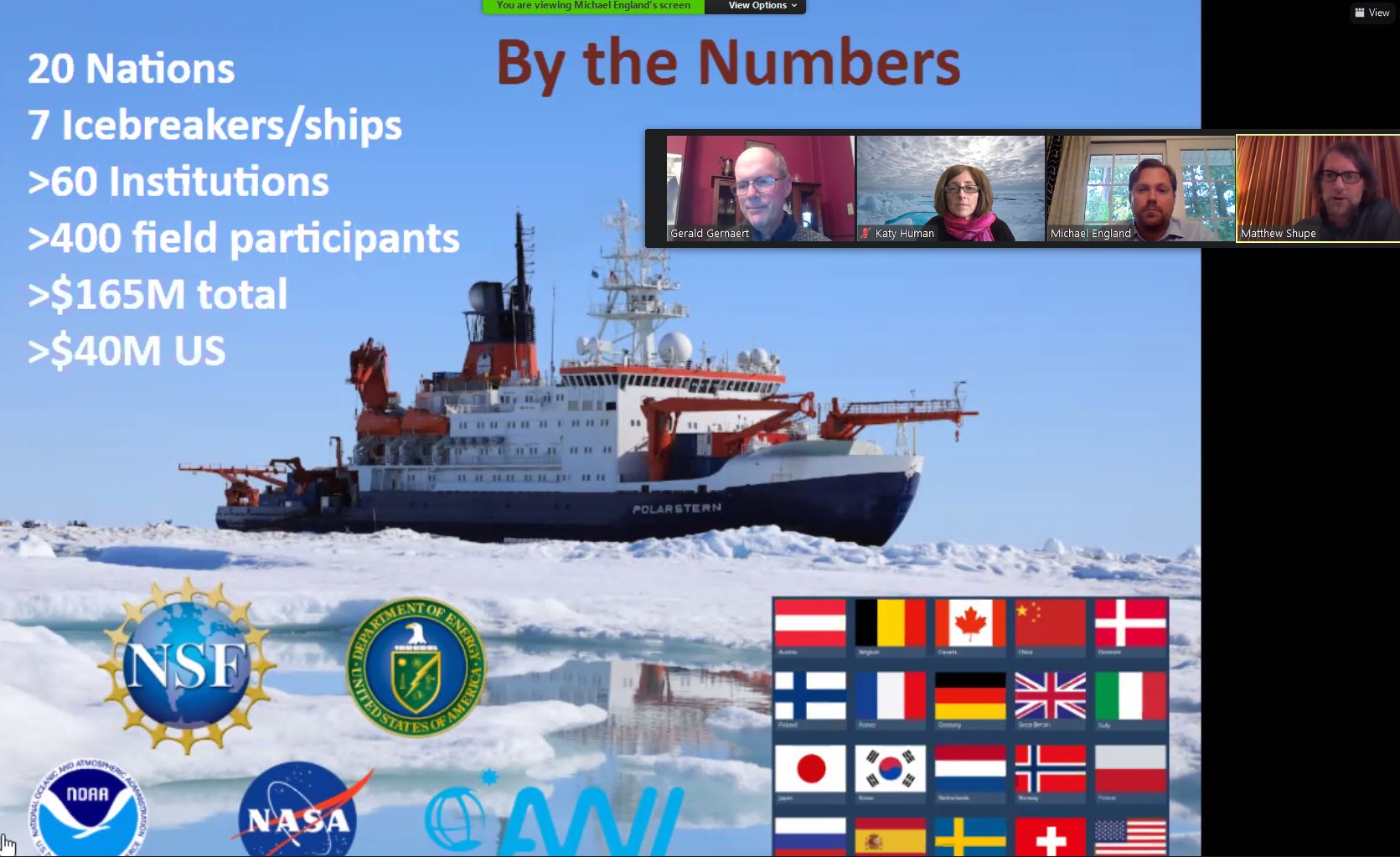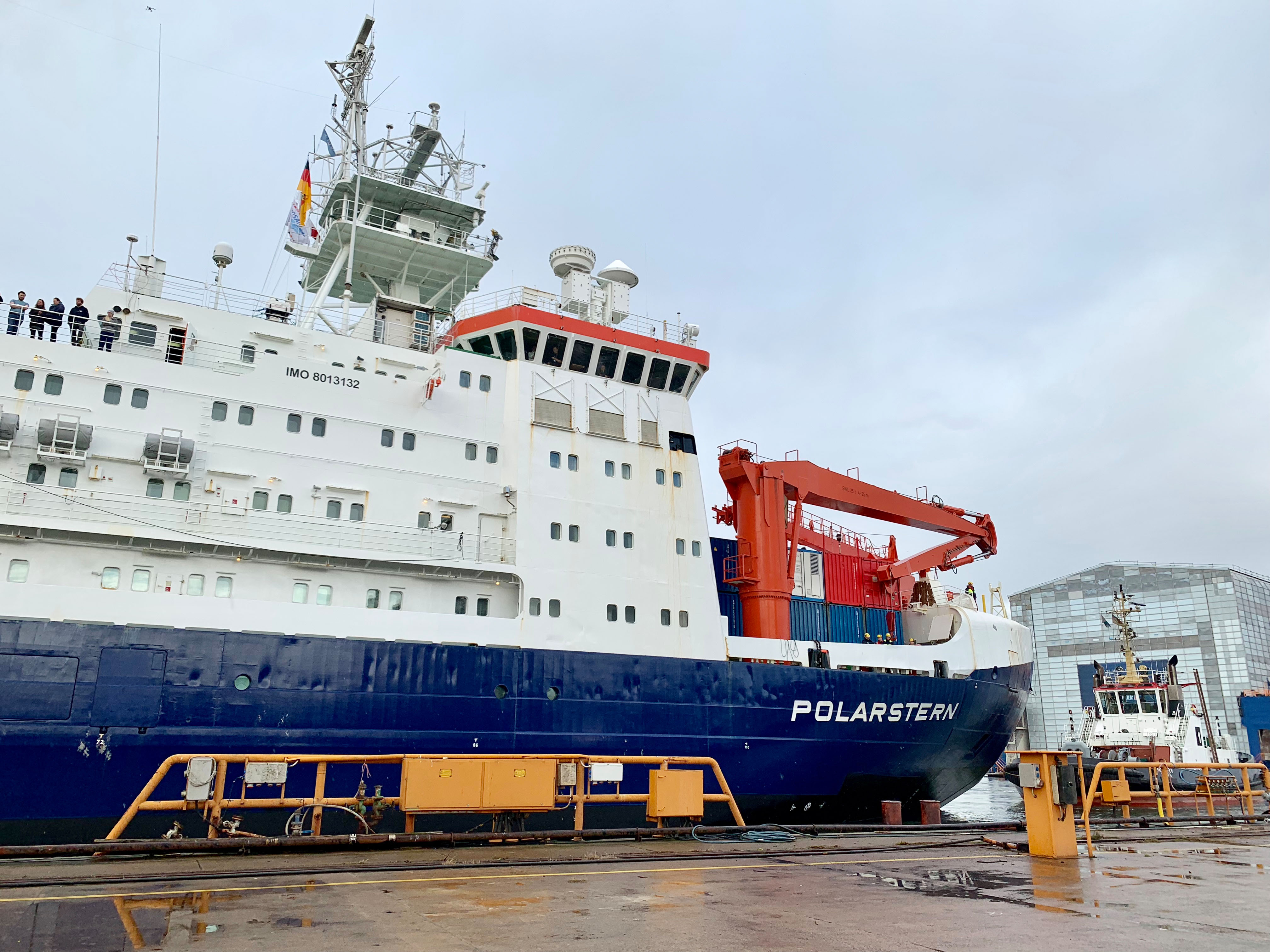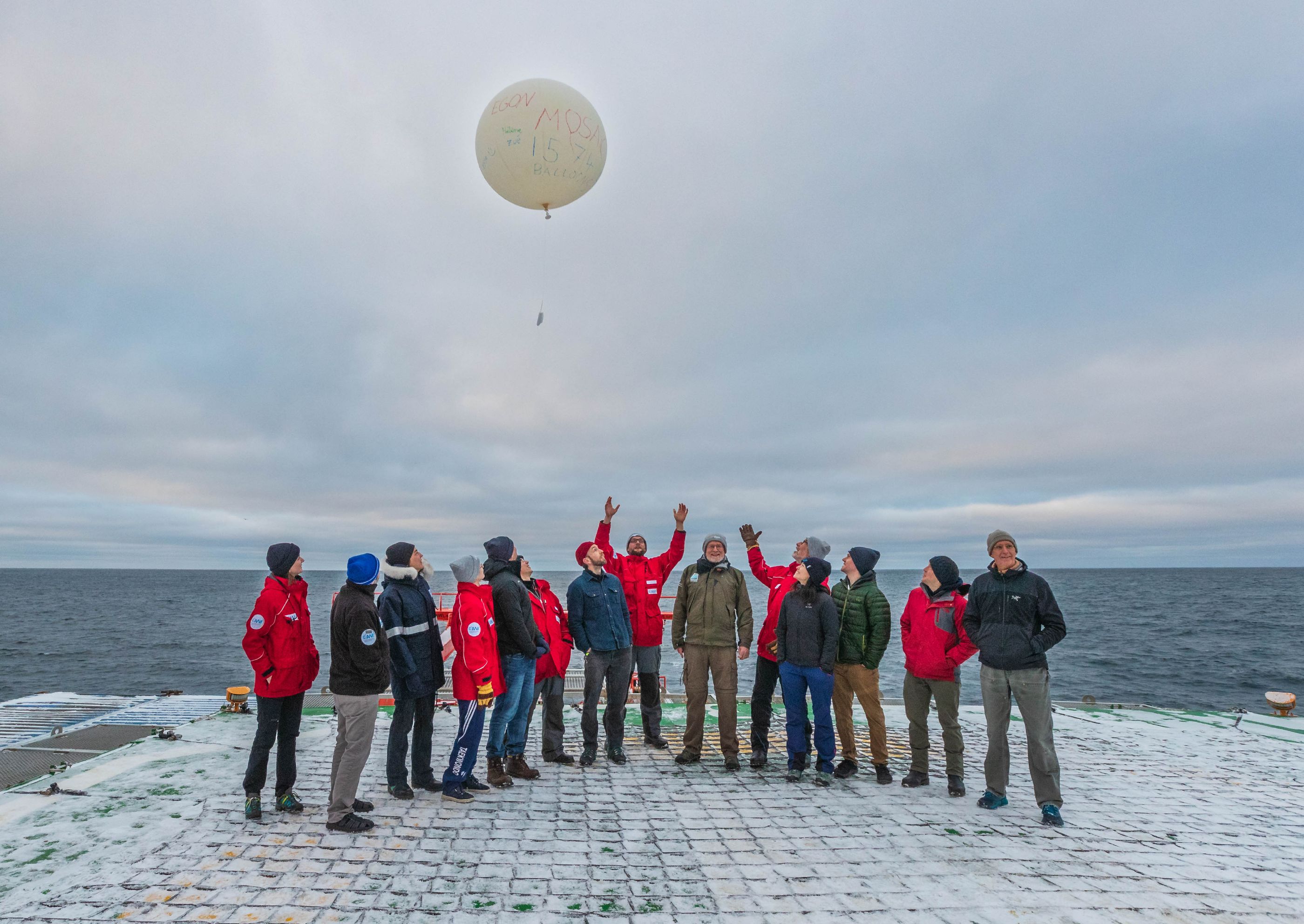Epic Arctic Mission Ends
Published: 17 November 2020
International climate research project marked by scientific surprises, logistical challenges
This release was originally published October 12, 2020, on the Cooperative Institute for Research in Environmental Sciences (CIRES) website.

For nearly 12 months, as the German icebreaker Polarstern drifted with Arctic sea ice, scientists onboard collected petabytes of data describing the ocean, the ice, and the atmosphere. They built research stations on the ice, dipped nets, deployed buoys, and flew drones.
Speaking more than a dozen different languages, they worked toward the same goal: better understanding how dwindling Arctic sea ice influences the region’s climate system—and how those changes ripple around the world.
“We knew the ice was thinning, but it was still far more dynamic than we thought,” said University of Colorado, Boulder, scientist Matthew Shupe, co-coordinator of the international Arctic mission. “It surprised us,” said Shupe, an atmospheric scientist who is part of CIRES and affiliated with NOAA. “The unpredictability of the Arctic is one of its characteristics right now. And we were right there in the middle of a manifestation of that.”
This morning, more than 380 days after leaving for the central Arctic Ocean from Tromsø, Norway, the Polarstern returned to its home port in Bremerhaven, Germany. Local ships escorted the Alfred Wegener Institute’s research vessel as it entered the harbor.

U.S. scientists on the German-led mission, dubbed MOSAiC, the Multidisciplinary Drifting Observatory for the Study of Arctic Climate, said they will spend years, possibly even decades studying the data they collected from the ice during the last year.
For some, those data tell a story of dynamism: The sea ice moved more than expected, cracking in fractures that opened into leads hundreds of miles long, then closing, ridging, and generally creating a messy, rough icescape. Jennifer Hutchings, a sea ice expert from Oregon State University, said she’s barely begun to dig into her data, but it’s clear she and her colleagues will get new insight into the tricky physical dynamics of how sea ice fractures under the forces of wind and ocean motion.
That’s significant, Hutchings said, because “sea ice is one of the most important components of the Arctic climate system. It modulates the ‘talking’ between the ocean and the atmosphere.”
For other scientists, the surprise was the relative calm: When the ice began melting in the spring, for example, gases trapped in the ocean below didn’t immediately diffuse out into the air, as expected. Instead, lenses of cold freshwater several feet thick capped the seawater, restricting the upward movement of some gases.

“This certainly took us by surprise,” said Steve Archer, a biogeochemist with Bigelow Laboratory for Ocean Sciences in Maine. “We expected to see a big peak in gas flux rates in the spring … Either it was short and we missed it or it just didn’t happen. I think it really didn’t happen, and this is a feature of the central Arctic that we did not appreciate.”
The National Science Foundation was the lead U.S. funder of MOSAiC, supporting dozens of researchers with about $27 million, putting it among the largest Arctic research initiatives the agency has ever mounted. The U.S. Department of Energy was the first U.S. agency to commit to the research mission, investing nearly $10 million and providing the largest suite of atmospheric instruments. All MOSAiC data will soon be available for free to researchers around the world; some measurements, such as from DOE’s Atmospheric Radiation Measurement (ARM) user facility, are already accessible.
“Direct observations and physical samples collected during the MOSAiC expedition represent a quantum leap in our understanding of natural processes and cycles in the central Arctic Ocean across all seasons,” said Frank Rack, NSF’s Arctic research support and logistics manager. Winter measurements are especially valuable because they’re so rare, Rack said, and MOSAiC data will “aid in the development of improved models, forecasts, and future predictions.”

Data sets that researchers imagined would be continuous for the entire year do have some gaps. Polar bears occasionally disrupted research on the ice, delaying instrument repairs or atmospheric balloon launches. An Arctic fox chewed through data cables, and storms broke up scientific “cities” on the ice that required relocation or repair. Most significantly, the ship had to leave the ice for about a month this spring, to exchange staff while responding to the challenges of the global coronavirus pandemic.
Some systems remained on or below the ice, autonomously collecting data. Other projects paused briefly. “We lost all our June data,” said Jeff Bowman, an ecologist and oceanographer at the Scripps Institution of Oceanography, University of California, San Diego. “But considering the global disruptions, we were extremely fortunate that MOSAiC could continue. Despite the hole, when all is said and done, it will still be an astonishing collection of data.”
Gary Geernaert, with DOE’s Office of Science, agreed, and credited the accomplishment on the international collaborations that defined MOSAiC. “Now we have game-changing data that will provide a more robust understanding of the interactions between aerosols, clouds, precipitation, and sea ice—and improve earth system models,” said Geernaert, who directs the Earth and Environmental Systems Sciences Division. “We believe the research coming out of this campaign will drive scientific discovery for a long time to come.”
This news release is courtesy of CIRES.
Keep up with the Atmospheric Observer
Updates on ARM news, events, and opportunities delivered to your inbox
ARM User Profile
ARM welcomes users from all institutions and nations. A free ARM user account is needed to access ARM data.


















